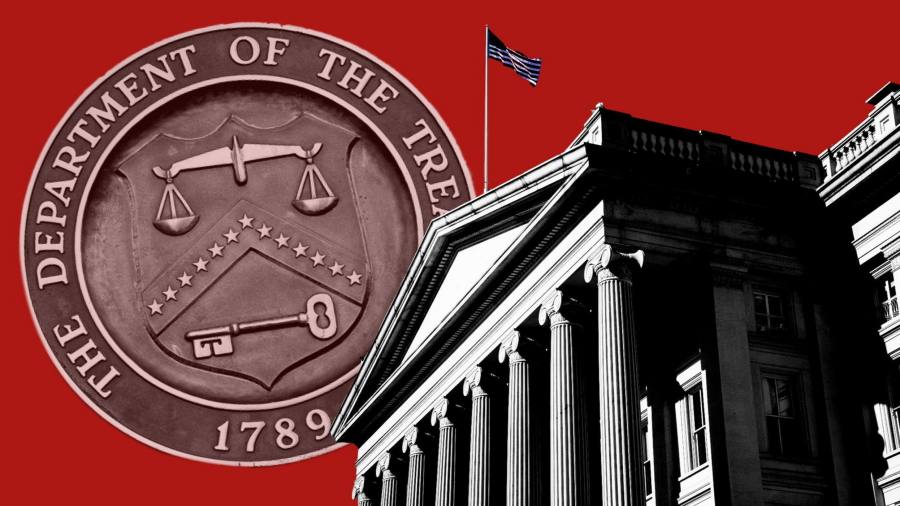Receive free Markets updates
We’ll send you a myFT Daily Digest email rounding up the latest Markets news every morning.
Global stocks and bonds fell as investors were caught off guard by robust US economic data and a signal from the Federal Reserve that it would raise interest rates further to tame inflation in the world’s largest economy.
Benchmark stock indices in the US, Europe and Asia dropped on Thursday in a broad-based sell-off after minutes on Wednesday of the Fed’s latest meeting showed officials intend to resume interest rate rises, despite pausing their programme of monetary tightening in June.
The FTSE All-World index shed as much as 1.7 per cent, before recovering to be 1.3 per cent lower and remaining on course for one of its worst single-day performances this year. In New York the S&P 500 index was down 0.8 per cent and the Nasdaq Composite shed 0.9 per cent, trimming steeper losses earlier in the session.
The Stoxx Europe 600 index fell 2.3 per cent, with 580 stocks in the benchmark declining. The biggest fallers were stocks sensitive to interest rate changes, such property and consumer cyclicals. The Stoxx 600 Real Estate index dropped 4.2 per cent.
The sell-off picked up speed, pushing US two-year borrowing costs to their highest level since 2007, after data showed US companies added the most jobs in more than a year in June. Investors have scrutinised labour market figures closely in recent months, with signs of continued resilience fuelling expectations of further Fed rate rises.
“Presuming the upcoming employment and consumer price index reports continue the themes that bothered [Fed officials] last month, we reckon the odds of a rate hike on July 26 have increased,” said Stephen Innes, managing partner at SPI Asset Management in Hong Kong.
In Europe, France’s Cac 40 fell 3.1 per cent, Germany’s Dax lost 2.6 per cent and London’s FTSE 100 dropped 2.2 per cent. Earlier in Asia, Hong Kong’s Hang Seng index fell 3 per cent and the Chinese CSI 300 lost 0.7 per cent.
The minutes from the June meeting of the rate-setting Federal Open Market Committee on Wednesday signalled that “almost all” participating officials believed additional increases in the Fed’s benchmark rate would be “appropriate”. They also characterised inflation as “unacceptably high”.
“Stocks are getting hit as markets now see the chances of two more Fed rate hikes by November as near a coin toss,” said Jamie Dutta, market analyst at Vantage.
The June meeting marked a break from the Fed’s relentless drive to bring down inflation from a multi-decade high last year. It was the first time the US central bank opted to keep the federal funds rate unchanged in 10 consecutive meetings.
The Vix volatility index, popularly known as “Wall Street’s fear gauge”, jumped to more than 17, its highest level since early June, as investors fretted that a prolonged period of high borrowing costs could soon weigh on the US economy.
“The initial reaction appears to be that the labour market is so strong, the Fed will be even more hawkish,” said Mike Zigmont, head of research and trading at Harvest Volatility.
The yield on the policy-sensitive two-year Treasury note was up 0.05 percentage points to 5 per cent in afternoon trading. The yield on the benchmark 10-year note rose 0.09 percentage points to 4.04 per cent. Bond yields rise as prices fall.
Meanwhile, investors cranked up their bets on further Bank of England rate rises on Wednesday, with markets now pricing in a peak in borrowing costs of 6.5 per cent early next year.
Investors will pay close attention to US payrolls data released on Friday, with economists polled by Bloomberg expecting the pace of hiring to have slowed in June. However, the median forecast has underestimated jobs data for 14 consecutive months.
Read the full article here





